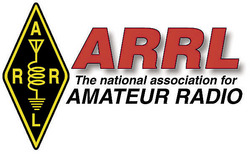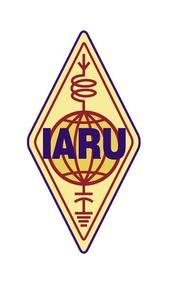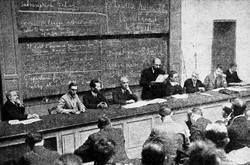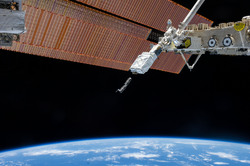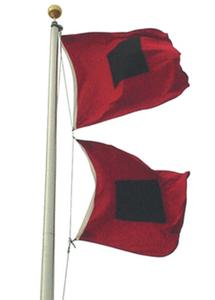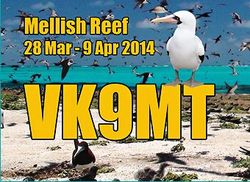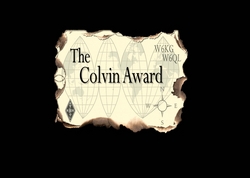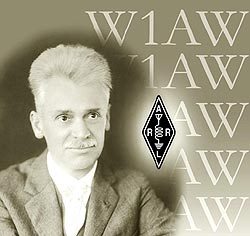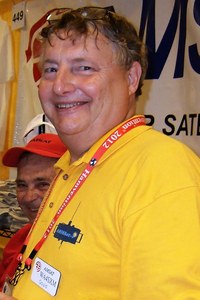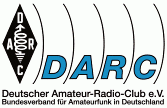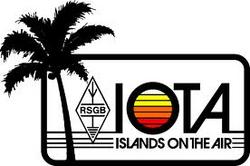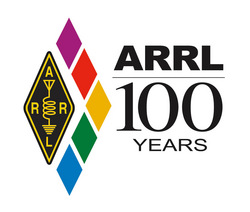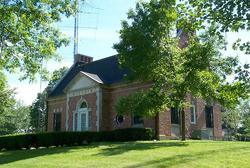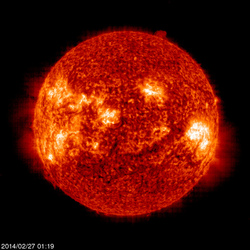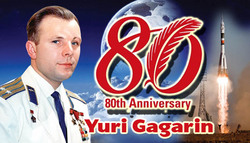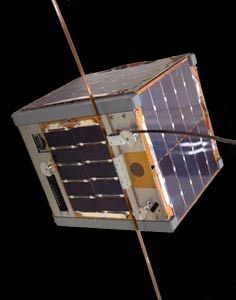 February 27, 2014 John E. Ross, KD8IDJ, Editor
| ||||||||||||||||||||
Your League: ARRL to File "Friend of the Court" Brief in Ohio Antenna Case The ARRL plans to file a "friend of the court" or amicus curiae brief on behalf of an Ohio radio amateur who has been at loggerheads with his community since 2009 in efforts to erect a modest antenna support structure. The Village of Swanton, Ohio, turned down the application of ARRL Life Member Gary Wodtke, WW8N, for an antenna variance to put up a 60 foot tower. Wodtke appealed, however, and in January the Fulton County Common Pleas Court issued a final judgment in his favor, ruling that federal and state law preempted Swanton's antenna ordinance.
Now, Swanton is appealing that order to the Ohio Sixth District Court of Appeals, asserting, in part, that Ohio's PRB-1 antenna law is unconstitutional, because it conflicts with the state's "Home Rule" statute, which gives communities broad and preemptive regulatory powers. Like the federal law, Ohio's PRB-1 statute calls on towns to "reasonably accommodate amateur station communications and shall constitute the minimum practicable regulation necessary." Ohio Section State Government Liaison Nick Pittner, K8NAP, believes the state appeals court's decision in Wodtke v. Village of Swanton could set legal precedent for similar antenna-related cases down the road. An attorney, Pittner was instrumental in getting Ohio's PRB-1 law enacted. "Appellate decisions are generally final, unless further review is granted by the Ohio Supreme Court," Pittner said in a statement. "While a court of appeals decision represents the law only in that appellate district, it carries significant precedential value in other Ohio courts and may also be cited in similar cases in other states." This case will mark the first time a state PRB-1 law has been challenged in an appeal. The Village of Swanton's ordinance established a fixed antenna height of 20 feet above the residential roofline. Wodtke wants to install a 60 foot antenna support structure on his 0.2 acre residential lot; the village allows greater height where the lot is at least 5 acres. While the appeal is pending, both parties have agreed that Wodtke be permitted to install a 40 foot antenna support structure, which complies with Swanton's current ordinance. Read more. Your League: Nevada Getting New Section Manager on March 1 The ARRL Nevada Section will have new leadership starting March 1. Section Manager Joe Giraudo, N7JEH, has announced that he is stepping down from the position, because a new job with his employer of more than 30 years will take him outside Nevada more often.
"This absence from the Section makes it increasingly difficult to effectively serve the membership within Nevada," said Giraudo, of Elko. He has served as SM since August 2008. "During the past five years, it has been my honor to serve as your elected Section Manager," Giraudo said in a message to Nevada ARRL members. With Giraudo's endorsement, Gary Grant, K7VY, of Reno, has been appointed to take the reins. He will complete the current term of office that extends until June 30, 2015. Membership and Volunteer Programs Manager Dave Patton, NN1N, consulted with Pacific Division Director Bob Vallio, W6RGG, in making the appointment of Grant. Grant has been an ARRL member for more than 50 years, and he is retired from the University of Nevada. He has served as an Assistant Section Manager, Official Observer Coordinator, and Official Observer within the Nevada Field Organization and helps run a ham radio list server. International: "Amateur Radio: Your Gateway to Wireless Communication" is World Amateur Radio Day 2014 Theme The International Amateur Radio Union (IARU) Administrative Council has designated "Amateur Radio: Your Gateway to Wireless Communication" as the theme for World Amateur Radio Day 2014. World Amateur Radio Day is celebrated each year on April 18 to recognize the anniversary of the founding of the IARU in Paris in 1925. ARRL Co-Founder Hiram Percy Maxim, 1AW, who had proposed the idea the year before, became its first president. The primary purpose of World Amateur Radio Day is to focus a public spotlight on Amateur Radio and its benefits to countries and communities. This year the IARU and its member-societies around the world will celebrate the organization's 89th anniversary.
Each year the IARU Administrative Council selects a World Amateur Radio Day theme that is consistent with the role and purpose of Amateur Radio and that represents a commendable activity that would cast IARU and Amateur Radio in a favorable light. As the IARU's history recounts, in the early 1920s it was generally assumed that the lower the frequency and the longer the wavelength, the better, and "very large antennas and very high power were the rule." Amateur Radio experimenters were the first to discover that the short wave spectrum, far from being a wasteland, could support worldwide propagation. As the rush to shorter wavelengths ensued, however, Amateur Radio, which had proved the value of this spectrum in the first place, "were in grave danger of being pushed aside," the IARU's history notes.
Adopting the philosophy of strength in numbers, Amateur Radio pioneers met in Paris in 1925 and created the International Amateur Radio Union to support Amateur Radio worldwide. Just 2 years later, at the International Radiotelegraph Conference, Amateur Radio gained the allocations still recognized today -- 160, 80, 40, 20, and 10 meters. From fewer than 30,000 licensees in 1927, Amateur Radio's numbers have grown to 3 million. From the 25 countries that formed the IARU in 1925, the IARU has grown to include 150 member-societies. Several IARU member-societies and associated clubs are expected to field special event stations to mark the occasion. Read more. -- Thanks to Geoff Atkinson, VK3TL, IARU R3 Director, IARU website Ham Radio in Space: More Ham Radio CubeSats Expected to Deploy from ISS This Week Another batch of CubeSats were deployed at noon on February 25 from the International Space Station. While no Amateur Radio satellites were among them, NASA has indicated, "More deployments are scheduled through Friday." JAXA astronaut Koichi Wakata, KC5ZTA, has been handling CubeSat deployments aboard the ISS.
Four Amateur Radio CubeSats -- LituanicaSat-1, LitSat-1, ArduSat-2, and UAPSat-1, along with the 915 MHz SkyCube -- may be deployed February 28. CubeSats deployments are streamed live. AMSAT-UK has reported that it's unclear whether another Amateur Radio CubeSat, the Peruvian Chasqui 1, which was sent to the ISS on February 5, also will be deployed on February 28. Eight NanoRacks deployers are installed on the Multi-Purpose Experiment Platform. Each deployer can hold up to six 1U (a unit = 10Ã10Ã10 centimeters) CubeSats or two 3U CubeSats. Two 3U CubeSats (6U total) can be deployed every one to two orbits to prevent collisions. ⦠LituanicaSAT-1 carries an FM transponder: Uplink 145.950 MHz/Downlink 435.180 MHz. It also has an AX.25 transponder: Uplink 145.850 MHz/Downlink 437.550 MHz. The CW beacon is on 437.275 MHz. ⦠LitSat-1 carries an SSB transponder: Uplink 435.180 MHz/Downlink 145.950 MHz, and an AX.25 packet transponder: Uplink 437.550 MHz/Downlink 145.850 MHz. ⦠ArduSat-2 will transmit 9.6 MSK CCSDS data on a 437 MHz downlink. ⦠UAPSAT will carry an AX.25 packet transponder: Uplink 145.980 MHz/Downlink 437.385 MHz. ⦠Chasqui-1 will transmit AX.25 format data on 437.250 MHz. AMSAT-UK has reported that, in addition to the CubeSat deployments from the ISS, seven Japanese Amateur Radio satellites are scheduled to launch from Earth February 27 at 1807 UTC. The Amateur Radio on the International Space Station (ARISS) project -- the ARISS-EU "Ham Video" system -- is tentatively set to begin the commissioning process no sooner than the second weekend in March. Ham radio-related activities aboard the ISS typically take a low priority on the astronauts' work agenda.
Meanwhile, there's some bad news regarding the Delfi CubeSat, Delfi-n3Xt. Program Manager Jasper Bouwmeester PC4JB, reported the results of testing carried out on the CubeSat's 435/145 MHz linear transponder. "Unfortunately, we have not heard anything from Delfi-n3Xt since Thursday [February 20], after our transponder test," Bouwmeester said. "Nothing seemed to be wrong, except for the transponder itself not properly working." Bouwmeester said the Delfi team suspects a hardware failure and has been attempting to revive the satellite. Delfi-n3Xt transmits at about 145.870 MHz. Read more. Public Service: Hurricane Conferences Set for April and May
The 2014 National Hurricane Conference will take place April 14-17, at the Orlando Hilton in Orlando, Florida. The primary goal of the National Hurricane Conference is to improve hurricane preparedness, response, recovery and mitigation in order to save lives and property in the US and the tropical islands of the Caribbean and Pacific. The conference also serves as a national forum for federal, state and local officials to exchange ideas and recommend new policies to improve emergency management. At past conferences, there has been a robust Amateur Radio and ARES presence in the form of workshops and discussion forums. Planning for this year's conference is underway, and registration is open. The 28th annual Governor's Hurricane Conference (GHC) will be held May 11-16, 2014 at the Rosen Centre Hotel and Orange County Convention Center in Orlando, Florida. This conference will feature an Amateur Radio and ARES component. This year's theme is "Rethink risk." -- Thanks to the The ARES E-Letter. Public Service: RDF Bracelet Helps Oregon Hams to Locate Missing Man Members of the Lane County (Oregon) Sheriff's Amateur Radio Operators (LCSARO) -- an ARRL-Affiliated Club -- used radio direction-finding techniques to locate a 78-year-old Eugene, Oregon, man suffering from dementia, who had gone missing. The man's wife reported February 16 that her husband had wandered away from the couple's home, east of the University of Oregon Campus. Fortunately, the man was one of six at-risk individuals in the county equipped with a Project Lifesaver RDF bracelet. As a result, the specially trained hams in the sheriff's department were able to track down and locate the missing person in downtown Eugene. He was not injured. The ham radio team minimizes the need for large-scale search parties that typically involve many agencies, hundreds of police officers, and thousands of dollars in cost. The LCSARO also supports communication in disaster and emergency situations. -- Thanks to John Bigley, N7UR, Nevada Amateur Radio Newswire DX: Mellish Reef DXpedition Ready to Pick Up the Post-FT5ZM Slack With the hubbub generated by the just-ended FT5ZM Amsterdam Island DXpedition still echoing in our ears, the Mellish Reef VK9MT DXpedition is waiting in the wings to launch its own adventure on the Amateur Radio airwaves. VK9MT will be handing out another rare one March 29 through April 9 from the Coral Sea atoll.
"Congratulations to the FT5ZM team for their excellent operation," Team Mellish said in a February 20 news update. "Our equipment is on the way to Australia, and the team is making last-minute preparations for their journey to Australia." An advance team is set to arrive in Australia on March 18 to start retrieving equipment from storage and preparing for the sea voyage. The team has selected the 25 meter passenger expedition yacht Evohe from New Zealand to transport operators and gear to Mellish Reef. Given the paucity of dry land at the operating site, DXpedition participants plan to take their meals and sleep on the vessel. A pilot team now is in place to manage all communication between the island team and DXers. An online log will be available. The DXpedition also has spelled out its QSL policy.
Located some 1150 kilometers north-northeast of Brisbane, Australia, Mellish Reef takes the form of a boomerang-shaped platform some 10 kilometers long and 3 kilometers wide. The schedule calls for 10 full days of operation on 160 through 10 meters, CW, SSB, and RTTY, with 10 operators. Mellish Reef was last activated in 2009 and is number 23 on ClubLog's February 2014 DXCC Most Wanted List.
The team said it was "honored" to receive an ARRL Colvin Award grant, funded through an endowment established by Lloyd Colvin, W6KG (SK). The DXpedition budget is estimated at $110,000, not including operators' individual expenses. The team has pledged "full financial transparency" for all aspects of the DXpedition. "When the books are closed, clubs and foundations that supported the project will receive a financial accounting," Team Mellish has said. Contact the DXpedition via e-mail. The DXpedition also has a Facebook page. Several members of the VK9MT team plan to attend Dayton Hamvention in May and the Friedrichshafen, Germany, Ham Radio exhibition in June. Read more. ARRL Centennial: W1AW Centennial Operations Now in Washington, Kansas The ARRL Centennial "W1AW WAS" operations that are taking place throughout 2014 from each of the 50 states now are in Washington (W1AW/7) and Kansas (W1AW/0). They will relocate at 0000 UTC on March 5 (the evening of March 4 in US time zones) to Idaho (W1AW/7) and Kentucky (W1AW/4). During 2014 W1AW will be on the air from every state (at least twice) and most US territories, and it will be easy to work all states solely by contacting W1AW portable operations.
In conjunction with the 100th anniversary of the ARRL, the ARRL Centennial QSO Party kicked off January 1 for a year-long operating event in which participants can accumulate points and win awards. The event is open to all, although only ARRL members and appointees, elected officials, HQ staff and W1AW are worth ARRL Centennial QSO Party points. Working W1AW/x from each state is worth 5 points per contact. To earn the "Worked all States with W1AW Award," work W1AW operating portable from all 50 states. (Working W1AW or W100AW in Connecticut does not count for Connecticut, however. For award credit, participants must work W1AW/1 in Connecticut.) A W1AW WAS certificate and plaque will be available (pricing not yet available). The ARRL has posted an ARRL Centennial QSO Party leader board that participants can use to determine how many points they have accumulated in the Centennial QSO Party and in the W1AW WAS operations. Log in using your Logbook of the World (LoTW) user name and password, and your position will appear at the top of the leader boards. Results are updated daily, based on contacts entered into LoTW. Milestones: AMSAT's G. Gould Smith, WA4SXM, Steps Down from AMSAT Board AMSAT-NA Board Member and Vice President-User Services G. Gould Smith, WA4SXM, has resigned both positions "with deep regret."
"AMSAT has played a major part in my life over the last 25 years; the incredible people have made it such a great pleasure," Smith, of Knoxville, Tennessee, told AMSAT President Barry Baines, WD4ASW. Smith has confronted health issues in recent years. "I had hoped that I would be able to contribute this year, but that hasn't worked out," he told Baines. "The organization needs to have contributing people in these positions." Baines expressed sorrow over Smith's departure. "[Y]ou have done so much for AMSAT over the years," he said. First Alternate Board Member JoAnne Maenpaa, K9JWM, steps up as a board member to fill the vacancy, at least until new elections are held this fall. Smith's leadership position as Vice President-User Services remains open. Read more. -- Thanks to AMSAT News Service Technology: DARC Questions BPL/PLT Emission Measurement Method While complaints of BPL interference have become rare in the US, the Deutscher Amateur Radio Club (DARC), Germany's national Amateur Radio society, continues to battle the issue. The DARC recently raised questions regarding the measurement protocol that federal authorities used to test devices used for power line telecommunication (PLT), as BPL is known in Europe. The DARC Scientific Research Associate Thilo Kootz, DL9KCE, said it appears the Federal Network Agency conducted some of its PLT emission measurements while the devices were in stand-by mode, with no data being transferred.
"The agency concluded that the device met all standard requirements," Kootz said, "but our preliminary findings showed that emissions from a similar unit were approximately 100 times above the limit." The DARC, he said, had to use the Freedom of Information Act to obtain a copy of the measurement protocols the federal agency employed, which leave several questions unanswered. Kootz called it "a questionable procedure" to measure the PLT device while it was idle. "A lawnmower that's not running does not violate the noise ordinance," he said. "Such a measurement technique offers carte blanche for thousands of other devices that should not be permitted to come to market." Read more. Events: Islands On The Air Gatherings Set The annual Islands On The Air (IOTA) BASH will take place on the weekend of March 14-15 in Boerne, Texas. IOTA BASH 2014 is sponsored by the Island Radio Expedition Foundation (IREF). Contact Mike Crownover, AD5A, with any questions or visit the IREF website.
The 19th annual IOTA Dinner will be held in conjunction with the 65th annual Visalia International DX Convention, Friday, April 4, in the Charter Oak Room of the Visalia/Marriott Conference Center in Downtown Visalia, California. The event is open to all who are active in IOTA (or who want to see beautiful pictures of faraway islands). The IOTA program follows the dinner with several guest speakers on the schedule. The event gets underway at 5:30 PM PT. Tickets are $35 per person. Reservations and payment in advance are required by March 23. Send checks to IOTA Dinner Coordinator Ray Benny, N6VR, 462 South Reed Rd, Chino Valley, AZ 86323 (he will confirm receipt by e-mail). Tickets are limited, and admission to the program following the dinner is free and open to all. Sponsored by the Radio Society of Great Britain (RSGB), IOTA is an Amateur Radio award program that encourages operators to contact stations on islands around the world. Feature: A Century of Amateur Radio and the ARRL America's "Roaring 20s" had passed and, with them, a period of roaring growth in radio technology. But a large problem had fallen on America, one that began on October 29, 1929 -- "Black Tuesday," the day the stock market crash triggered our Great Depression. Like everyone else, hams had to tighten their belts during the 1930s. Typical ham didn't have enough disposable income to take advantage of the best advances in technology, so they learned to improvise. Amateur Radio continued to grow, both in numbers and accomplishments. Here are some Amateur Radio and ARRL tidbits from the 1930s: ⦠January 1930 QST announced that phone operation on 20 meters had been authorized.
⦠By the early 1930s most hams were using crystal-controlled transmitters, but most hams had only a small number of crystals. The usual procedure was to call long CQs and then tune up and down the band looking for long calls in reply. ⦠The first ARRL "International" Field Day was held in 1933. By 1938 more than 1000 stations were participating. The event had become as popular as the ARRL DX Contest and the Sweepstakes. ⦠The Communications Act of 1934 created the Federal Communications Commission (FCC), which replaced the Federal Radio Commission. Within a few years, the FCC was monitoring ham stations, to be certain everyone was following the rules and regulations. QST warned its readers to be sure their transmitters were operating within the ham bands, because the FCC could measure frequency with an accuracy of 10 cycles per second! ⦠By 1936 there were 46,000 radio amateurs in the US; by 1939 the number had risen to 51,000. ⦠The ARRL announced the start of the DXCC program in 1937. In 1938, W3CRA qualified for the first DXCC certificate -- quite a feat!
⦠League Co-Founder Hiram Percy Maxim, W1AW, died suddenly on February 17, 1936, at age 66. After Maxim's death, the FCC issued the call sign W1AW to ARRL. The Maxim Memorial Station, W1AW, in Newington, Connecticut, was dedicated on September 2, 1938, in his honor. The ceremony was broadcast nationwide by radio. ⦠In May 1936, Eugene Woodruff, W8CMP, was elected by the ARRL Board of Directors as the League's second President. Woodruff was the head of the Departments of Electrical Railways and Radio at Pennsylvania State College. But then, another World War was upon us. We'll look at hams and the war years next week. The K7RA Solar Update Tad Cook, K7RA, Seattle, Washington, reports: We saw an increase in solar activity over the past week, so it appears that the recovery of solar cycle 24 is not over. Average daily sunspot numbers February 20-26 increased nearly 24 percent from the previous 7 days -- from 140.4 to 173.6. Average daily solar flux over the same period rose from 158.7 to 167.3.
Predicted solar flux over the near term is 180 on February 27-28, 175 on March 1-6, 180 on March 7-9, then 175 and 160 on March 10-11, 145 on March 12-13, 150 on March 14-17, and 155 on March 18-20, peaking at 180 on March 26 and again on April 2-4. Predicted planetary A index is 18, 15 and 8 on February 27 through March 1, 5 on March 2-4, 8 on March 5-6, 5 on March 7-8, 10 and 5 on March 9-10, 8 on March 11, and 5 on March 12-22. The ARRL International DX Contest phone is this weekend, starting at 0000 UTC on March 1 (the evening of February 28 in US time zones), and continuing through 2359 UTC March 2. In the Friday bulletin look for an updated forecast, as well as reports from readers. Send me your reports and observations. In Brief ARRL International DX Contest (SSB) Offers Fun for Tech Ops! Technician licensees, who have phone operating privileges on 10 meters, may want to give the band a try this weekend, March 1-2 (UTC), during the ARRL International DX Contest. The exchange is a signal report and your state. With the solar flux high enough to open polar paths, this will be a great time to see what you can do with your HF phone privileges! -- Thanks to The ARRL Contest Update
Special Call Signs to Commemorate Russian Space Pioneer's Birth, Spaceflight: Special call signs will mark Russian cosmonaut Yuri Gagarin's first human spaceflight -- a complete Earth orbit on April 12, 1961. The operations celebrate Gagarin's birth 80 years ago in 1934 (he died in 1968) and the historic spaceflight 53 years ago. Those years and the number "80" are embedded in each call sign. The activity will take place March 1-April 30. A certificate is available. Kazakhstan also will field several special UP-prefix call signs in Gagarin's honor, all with the suffix "KEDR." That was the call sign Gagarin used on his historic space mission. QSL via RW6HS. -- Thanks to The Daily DX FT5ZM Operation Approved for DXCC Credit: The ARRL DXCC Desk has approved the 2014 operation of FT5ZM -- Amsterdam & St Paul Island -- for DX Century Club credit. If a DXCC credit request for this operation has been rejected in a prior application, contact ARRL Awards Branch Manager Bill Moore, NC1L, to be placed on the record update list. Note the submission date and/or application reference number. DXCC is Amateur Radio's premier award that hams can earn by confirming on-the-air contacts with 100 DXCC "entities," most of which are countries in the traditional sense. Learn more. -- ARRL Awards Branch Manager Bill Moore, NC1L
Registration Open for 2014 CubeSat Developers' Workshop: Registration is now open for the 11th annual CubeSat Developers' Workshop, April 23-25, at California State Polytechnic University in San Luis Obispo, California. The workshop's theme is "The Edge of Exploration." Members of the CubeSat community, policymakers, government agency representatives, scientists, and academicians from around the world are expected to attend. The Cal Poly CubeSat Group invites authors to present papers on all areas of CubeSat development and mission research. For more information, contact the Cal Poly CubeSat Group, (805) 756-5087. -- AMSAT News Service DX Engineering Acquires Cycle 24 Antenna Products: DX Engineering has acquired the assets of Cycle 24 Antenna Products, a web-based retailer of Amateur Radio antennas and antenna components. "Cycle 24 is a great fit with DX Engineering," said Tim Duffy, K3LR, DX Engineering's chief marketing officer. "We welcome all of Cycle 24's customers to the DX Engineering family." He noted that several Cycle 24-developed products now will be available through DX Engineering. -- Thanks to Tim Duffy, K3LR Clearwater Amateur Radio Society Celebrates 60 Years as ARRL-Affiliated Club: The Clearwater Amateur Radio Society (CARS) has celebrated 60 years as an ARRL-affiliated club. CARS, which boasts nearly 50 members, became affiliated with the ARRL on January 18, 1954. Representing the ARRL at club's February meeting to present a plaque was ARRL West Central Florida Section Manager Dee Turner, N4GD. CARS President, Craig Shapiro, KJ4BYK, accepted the award on behalf of the club. A small celebration took place following the meeting to commemorate the event. -- Thanks to Kevin Poorman, KV4CT, PIO Preliminary Contest Results Available: Initial results for the CW and phone weekends of the 2013 ARRL November Sweepstakes have been posted online. The articles feature category winners, Top 10 tables, Division Winners, and Region Leaders. A ranking of rare sections is included (the hardest to get last fall was NL, but QC was a close second). Preliminary results for the January North American QSO Party (CW) are now available, as well as preliminary results for the February North American Sprint (CW). -- Thanks to The ARRL Contest Update, NCJ Just Ahead in Radiosport
Visit the Contest Corral for details. Upcoming ARRL Section, State and Division Conventions and Events
Find conventions and hamfests in your area
ARRL -- Your One-Stop Resource for Amateur Radio News and Information Join or Renew Today! ARRL membership includes QST, Amateur Radio's most popular and informative journal, delivered to your mailbox each month. Listen to ARRL Audio News, available every Friday. Subscribe to... NCJ -- National Contest Journal. Published bi-monthly, features articles by top contesters, letters, hints, statistics, scores, NA Sprint and QSO Parties. QEX -- A Forum for Communications Experimenters. Published bi-monthly, features technical articles, construction projects, columns and other items of interest to radio amateurs and communications professionals. Free of charge to ARRL members: Subscribe to the ARES E-Letter (monthly public service and emergency communications news), the ARRL Contest Update (bi-weekly contest newsletter), Division and Section news alerts -- and much more! | ||||||||||||||||||||

